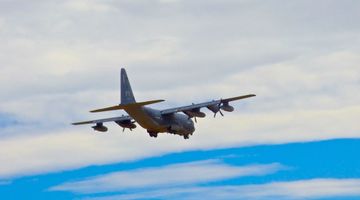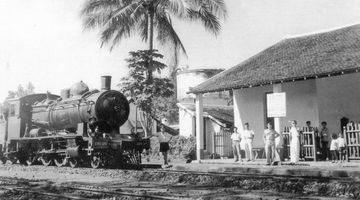Pakse Travel Guide
In a nutshell
Pakse is a small city in southern Laos that is one of the country’s major transport hubs; most travellers who come through Pakse don’t stay too long, instead using Pakse as a jumping-off point to explore other places in the country.
Why go to Pakse
The city of Pakse is located at the confluence of the Mekong and Xe Don Rivers (the name itself means “mouth of the river se”), and it’s true that this area doesn’t have a well-established tourist infrastructure yet.
While there may not be many exciting sites or fancy hotels in Pakse, but travellers who choose to linger for a bit can find places of interest within an easy reach from Palse. There are a few Buddhist temples scattered around town that are worth a peek at, and if you want to rent a motorbike, it will give you a great chance to explore the river scenery and get a feel for the area around Pakse – there are multiple waterfalls to stop at, as well as coffee fields and farms that may be of interest to travellers.
Another spot of interest close to Pakse is Si Phan Don (also known as the 4,000 islands), an idyllic area of Laos best known for its relaxing, laid-back vibes of natural beauty. Indeed, Pakse itself is an excellent spot for Southeast Asia backpackers to take a few days to relax and chill out while in transit, whether they are coming from or going to Thailand, Cambodia, Vietnam, or elsewhere in Laos.
When to go to Pakse
The best time to travel in Pakse is between the months of November-February, which marks the cool dry season; the rest of the year is rainy season, and March and April are the hottest months of the year in Laos.
Where to stay in Pakse
Accommodation options in Pakse are somewhat limited, and many of the accommodations in Pakse are relatively expensive compared to other areas in Laos. Most of the accommodation is centrally located along the town’s main street (near the French quarter), with a few places branching off into the side streets along town. In the budget range, you can expect to spend about LAK70,000-LAK120,000 for a private fan room in a guesthouse, or about LAK30,000 for a dorm room. Mid-range hotel rooms will run about LAK200,000, while the pricier spots in town will cost about LAK300,000-LAK400,000. If you’re wanting to stay a few days in the area but you’re more interested in exploring the scenery and coffee farms around the area rather than being stuck in the city centre of Pakse, there are also several guesthouses throughout the Bolaven Plateau area.
Where to eat in Pakse
There are plenty of great eating options in Pakse, in terms of food stalls, restaurants, cafes, bars, etc.
13 Road, the main tourist area in Pakse, is home to a lot of restaurants and food stalls; 42 road and 11 road, near the Mekong River, are also bustling with food options; finally, the Champasak Shopping Market and Pakse Hotel area also have several restaurants and food stalls.
It is easy to find both Lao and Western food at the restaurants within Pakse; Thai food is also relatively common here. There are a lot of cafes around town as well, some of which are more upscale than others. You can expect to pay LAK20,000-LAK50,000 for a dish from a restaurant, while food from the stalls and markets may run a bit cheaper.
How to get around Pakse
The majority of tourist services and attractions within the actual city of Pakse are easily travelled to on foot; as long as you stick to the Mekong riverside area and the tourist area of Road 13, you’ll be in walking distance of most things you need.
However, as most travellers in Pakse will wish to travel to attractions located further out from the city, other transportation will be required. Tuk-tuks are available and can range anywhere from LAK3,000-LAK20,000 for short trips near the city, maybe more if you wish your tuk-tuk driver to take you further.
One of the most popular ways for tourists to traverse the areas around Pakse is via motorbike. These can be rented for LAK50,000-LAK90,000 per day (depending on whether you get an automatic or semi-automatic bike), and gives you a great chance to really immerse yourself in the scenery of the Bolaven Plateau surrounding Pakse.
How to get to and from Pakse
As we’ve already mentioned, Pakse is somewhat of a traveling hub, not only because it is easy to launch off into other places in Laos from Pakse, but also because Pakse is an easy spot from which to move between other Southeast Asian countries like Thailand, Cambodia, or Vietnam. Whether you’re traveling by plane, train, or bus, you’ll have no trouble getting into and out of Pakse, no matter where your next destination is.
If you’re using Pakse as a stopping point before traveling onto Thailand, there are overnight buses running between Pakse and Bangkok that cost LAK250,00.
You can also travel to Ubon Ratchathani from Pakse, a 3-hour bus ride that costs about LAK54,000 and runs twice a day.
There are also buses running from Pakse into Cambodia; a bus to Phnom Penh will cost you LAK220,000, while a bus to Siem Reap will be about LAK250,00 – these trips are about 14 and 12 hours from Pakse, respectively. Kampong Cham, Kratie, and Stung Treng are some other Cambodian cities that are accessible by bus from Pakse.
You can also take a bus from Pakse into Vietnam, to Kon Tum, Hue, or Da Nang, costing LAK180,000, LAK220,000, and LAK250,000, respectively.
There are four bus stations in Pakse (northern, southern, VIP, and regional), and from these stations, you can get buses to many different spots in Laos, including Vientiane, Savannakhet, Pak Song, Thakhek, Champasak, Don Dhet, Don Khong, Nakasang, Ban Khiet Ngong, Luang Prabang, and Vang Vieng.
Buses are the most popular form of transit into and out of Pakse, but a small airport also services daily domestic flights to Vientiane, Luang Prabang and Savannakhet, as well as international flights to Bangkok, Siem Reap, and Ho Chi Minh City.
Train tickets can also be purchased from Pakse to Bangkok, but will involve several minivan/bus transfers between Pakse and Ubon Ratchathani.
Is Pakse a safe place to visit?
Pakse is a safe place to travel to and from; you should, of course, take the usual precautions that you would take when traveling—stay aware and alert for thieves or potential nuisances, don’t flash expensive jewellery or gadgets, keep your money and important documents close at all times, etc. Beyond the basic precautions, there is no need to be excessively concerned for your safety while traveling in Pakse.

































